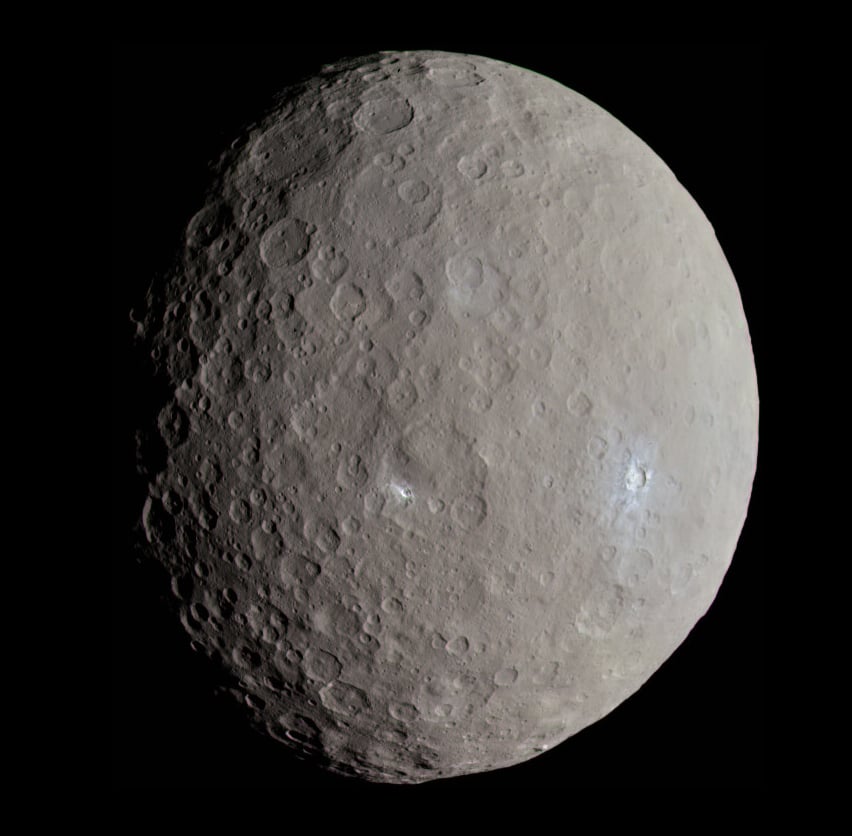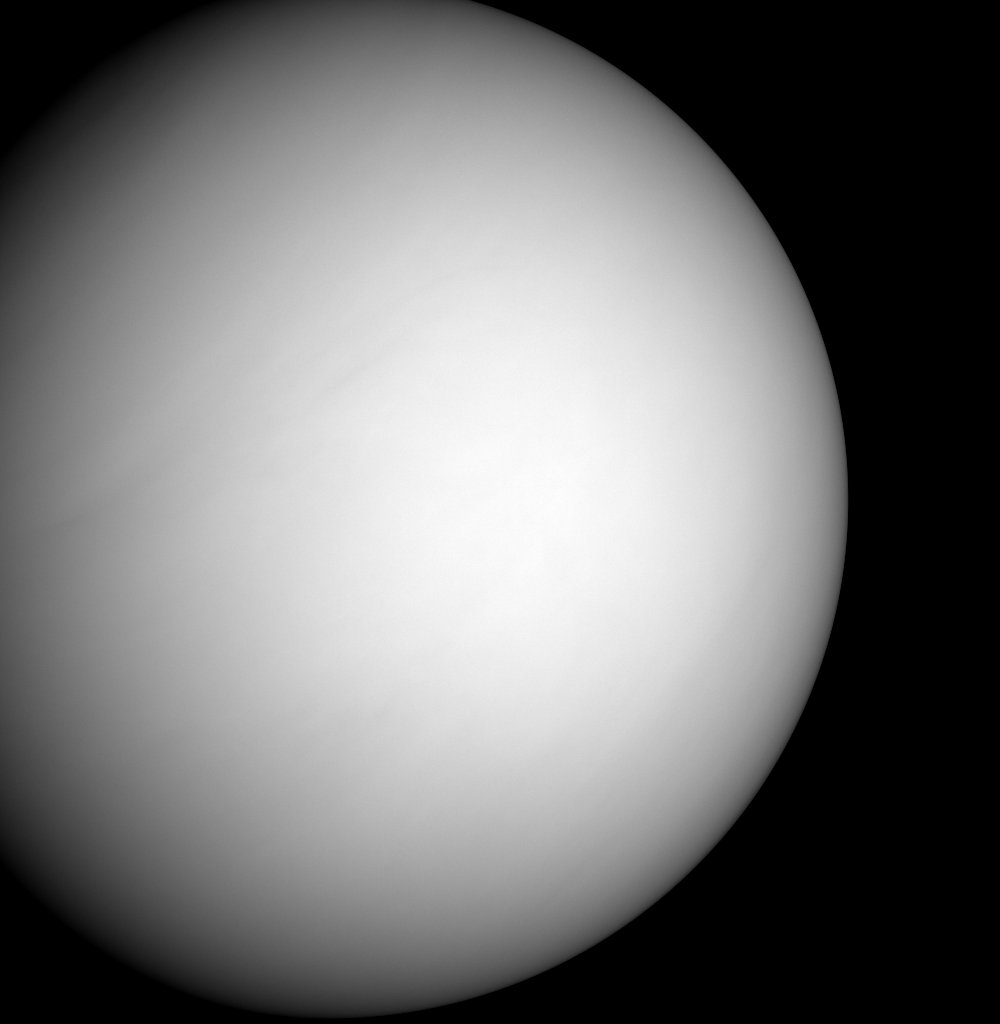During the early days of our Solar System, giant impacts were common occurrences. Earth likely experienced such an impact that created our Moon, and Mars may have been struck by objects that created its asymmetrical surface features. But what about Venus?
Venus captured by the Magellan spacecraft (Credit : NASA/JPL-Caltech)
Researchers led by M. Bussmann from the University of Zurich, used advanced computer simulations called smoothed particle hydrodynamics (SPH) to model what would happen if Venus were struck by massive objects early in its formation. These simulations can track how materials behave during extreme collisions, making them perfect for studying planetary impacts.
The team modelled Venus as it likely existed after its initial formation: a differentiated planet with an iron core making up 30% of its mass and a forsterite mantle comprising the remaining 70%. They then simulated impacts with objects ranging from 0.01 to 0.1 Earth masses, gigantic asteroids by today’s standards.
The simulations explored various impact scenarios with specific parameters; collision speeds between 10 and 15 km/s, different impact geometries (from head-on to oblique collisions), various primordial thermal profiles, and different pre-impact rotation rates of Venus. By running these digital experiments, researchers could analyse how such collisions might affect Venus’s post impact rotation periods and debris disc formation.
 Ceres, the most massive asteroid today is a mere 0.00016 Earth masses. (Credit : Justin Cowart)
Ceres, the most massive asteroid today is a mere 0.00016 Earth masses. (Credit : Justin Cowart)
The study’s findings reveal that a wide range of impact scenarios are consistent with Venus’s current rotation rate. These include head-on collisions on a non-rotating Venus and oblique, hit and run impacts by Mars sized bodies on a rotating Venus. Most importantly however, they found that collisions matching Venus’s present day rotation rate typically produce minimal debris discs that reside within Venus’s synchronous orbit. This means the material would likely reaccrete back onto the planet, preventing the formation of long lasting satellites, perfectly explaining Venus’s lack of a moon.
The researchers conclude definitively that a giant impact can be consistent with both Venus’s unusual rotation and lack of a moon, potentially setting the stage for its subsequent thermal evolution.
The study serves as a foundation for future research into Venus’s long term thermal evolution. Understanding the initial thermal state created by these potential impacts is essential for modelling how Venus developed its thick atmosphere, extreme greenhouse effect, and geological features over billions of years.
As space agencies plan new missions to Venus in the coming decades, this research provides valuable help for interpreting the geological and atmospheric data these missions will collect. The story of Venus’s violent early history may finally be coming into focus, revealing how our sister planet became the hellish world we observe today.
Source : The possibility of a giant impact on Venus
